#St. Patrick
Text

#four leaf clover#shamrock#Irish#Ireland#green#luck#lucky#happy st patricks day#st. patrick#st patricks day#March#March 17th#clover
90 notes
·
View notes
Text













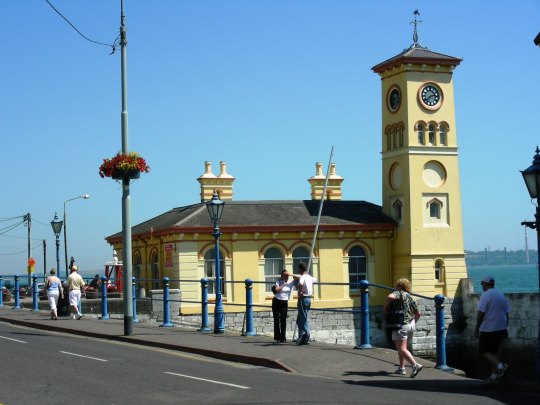






Saint Patrick returned to Ireland as a missionary bishop on April 5, 456.
#Cathedral Basilica of St. Augustine#St Colman's Cathedral#Cobh#Cork#USA#Blarney Castle#Trinity College#Irish Sea#sunset#Liffey River#Dublin#Muir Cheilteach#Ireland#landscape#seascape#countryside#Saint Patrick#St. Patrick#summer 2006#original photography#returned#5 April 456#anniversary#Irish history#architecture#cityscape#tourist attraction#landmark#travel#vacation
33 notes
·
View notes
Text

13 notes
·
View notes
Text
St. Patrick
There are two St. Patrick’s.
There’s the corned beef and cabbage, Irish-themed everything, drunken green nonsense version.
And then there’s the other one. The one who was kidnapped and sold as a slave into Ireland. After 6 years of slavery, he escaped.
When he later became a priest, he returned to Ireland. As a missionary. Beginning his ministry in the very place where he had labored as a slave.
This year I ended up spending some time with the other one.
Not because I have anything against drunken green nonsense. But because I was doing a little cleaning up and throwing out. And I found the box that my favorite rosary came in.
It’s a very Irish rosary. Each bead is a squarish piece of green Connemara marble. With a silver-plated chain.
One of the beads is long gone. Much of the silver has worn off. It’s well-loved and well-worn.
In the bottom of that very Irish box was a holy card. With a prayer, the Lorica. St. Patrick’s Breastplate.
It’s a long prayer. Here’s the part I keep coming back to. The part that hits home.
“Christ be with me, Christ before me, Christ behind me,
Christ within me, Christ beneath me, Christ above me,
Christ on my right, Christ on my left,
Christ where I lie, Christ where I sit, Christ where I arise,
Christ in the heart of everyone who thinks of me,
Christ in the mouth of everyone who speaks of me,
Christ in every eye that sees me, Christ in every ear that hears me.”
It’s a prayer that reveals the heart of someone who didn’t give up on anyone. Even those who had done their worst to him.
It’s the prayer of someone who loved like Christ.
I think I need to spend more time with this Patrick.
Today’s Readings
#St. Patrick#Lorica#God#Jesus#Catholic#Christian#Church#St. Patrick's Day#Prayer#Heart#God's Love#Rosary#Moments Before Mass
143 notes
·
View notes
Text


DESCRIPTION:
Silver St Patrick star, set with diamonds; eight-pointed star; centre: ruby St Patrick's cross overlaid with emerald shamrock applied with three gold crowns surrounded by motto QUIS SEPARABIT MDCCLXXXIII, in diamonds on light blue enamel; surrounded by circle of diamonds. Back plate gold; pin gilt.
Queen Victoria was supplied by Rundell Bridge and Rundell with the star of the Order of St Patrick presumably at the same time as the Garter and Bath stars, which had been supplied in September 1838.
However, no invoice to confirm exact delivery survives.
These stars, all of reduced size to a standard star of the time, formed the pattern for the Queen’s subsequent purchases of insignia, including the Star of the Order of the Star of India designed by the Prince Consort.
#St. Patrick's Day#Star of the Order of St. Patrick#St. Patrick#Queen Victoria#British Royal Family#Rundell Bridge and Rundell
18 notes
·
View notes
Text

Happy St. Patrick’s Day!
11 notes
·
View notes
Text
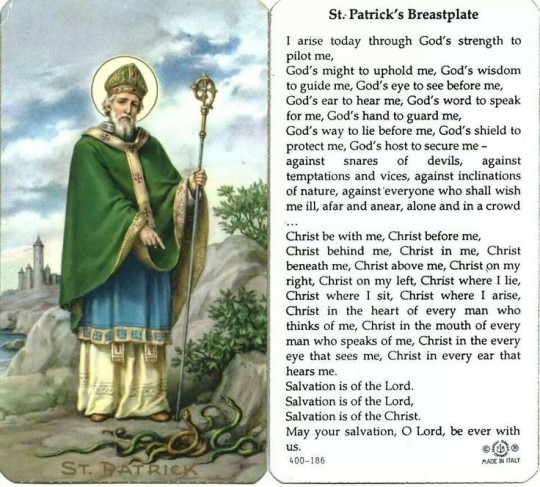
9 notes
·
View notes
Text
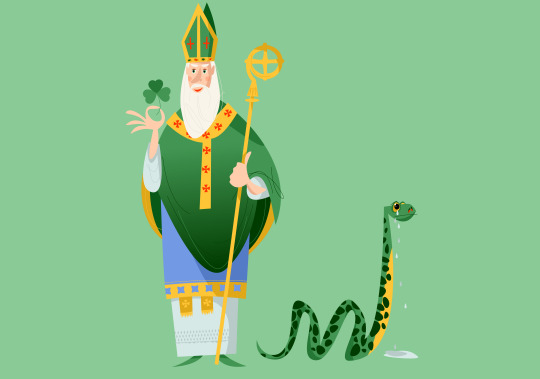
"Among the legends associated with St. Patrick is that he stood atop an Irish hillside and banished snakes from Ireland—prompting all serpents to slither away into the sea. In fact, research suggests snakes never occupied the Emerald Isle in the first place. There are no signs of snakes in the country's fossil record."
8 notes
·
View notes
Text
St. Paddy and the Leprechaun 🍀

St. Patrick's Day is a celebration of Irish culture and heritage, marked by parades, music, and the wearing of green.
St. Patrick's Day celebrations have been observed in the United States since the 18th century.
The first recorded parade took place in New York City in 1762 when Irish soldiers serving in the British army marched to honor St. Patrick.
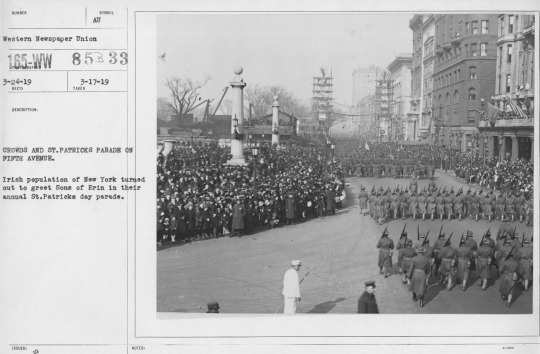
As the Irish-American population grew, so too did the prominence of the holiday, with cities like Boston and Chicago adopting their own grand parades and events.

The National Archives Catalog offers a glimpse into the ways in which the leprechaun has been integrated into American culture.

From political cartoons to advertisements, the image of the leprechaun has been used to represent Irish identity and, at times, to convey stereotypes.

In recent years, St. Patrick's Day has evolved into an opportunity to celebrate the contributions and achievements of Irish-Americans while still enjoying the playful, magical spirit of the leprechaun.
READ MORE:
Irish American Heritage Month-related resources, National Archives News.
The Forgotten Irish: Irish Emigrant Experiences in America, AOTUS blog.
National Archives Digital Records Help Irish Author Write History Books, National Archives News
Irish American Heroes, Text Message blog
60 notes
·
View notes
Text
This St. Patty's Day, give your friends and relations the gift of knowing that St. Patrick turned the King of Wales into a Werewolf

#st. patrick's day#st. patrick#wolf#werewolf#Wales#Veretius#Showing up at the bar dress like a wolf taking no feedback about my life choices#Showing people this page of Brewer's Phrase and Fable as my only explanation
9 notes
·
View notes
Text

#st. patrick#st. patricks day#happy st patricks day#st. patrick’s day quote#Irish quote#irish blessing#shamrocks#luck#lucky#happiness#Irish wishes#Ireland#Irish
39 notes
·
View notes
Text
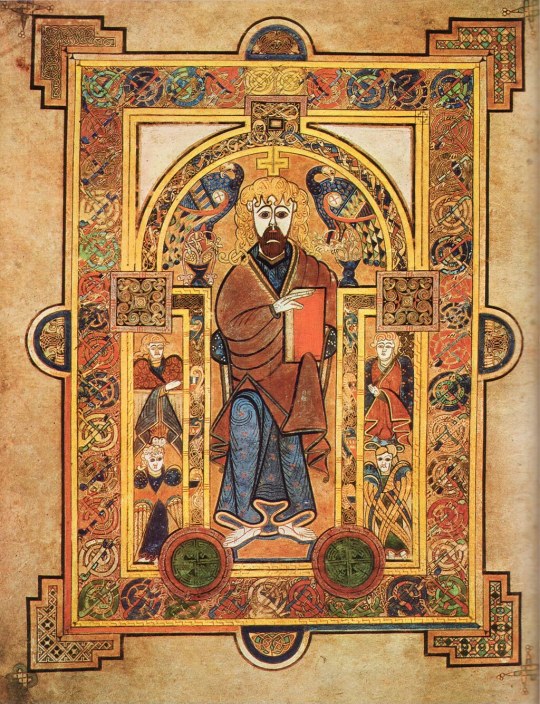
The red-bearded, green-eyed Christ surrounded by four angels.
from the Book of Kells
The Book of Kells (Latin: Codex Cennanensis; English: Book of Kells; Irish: Leabhar Cheanannais), also known as the Great Evangelical of Saint Colomba, is an illustrated manuscript of ornamental motifs made by Celtic cultural monks around the year 800. Considered a masterpiece of Irish Christianity and Irish-Saxon art, it, despite being incomplete, constitutes one of the most lavish enlightened manuscripts that have survived the Middle Ages. Due to its great beauty and excellent finishing technique, the manuscript is considered by many specialists to be one of the most remarkable vestiges of medieval religious art. Written in Latin, the Book of Kells contains the four Gospels of the New Testament as well as introductory and explanatory notes, all accompanied by many colorful illustrations and illuminations. The manuscript is on permanent exhibition today in the library of Trinity College in Dublin, Ireland, under the reference MS 58. The arrival of St. Patrick in the 5th century marked the end of paganism and opened the era of Christianity. Irish Christianity developed on a ground strongly marked by the religion of druid, holders and keepers of the prophetic vision, and sacrifices, ritual calendar and laws. St. Patrick, who evangelized the Irish in the fifth century, perfectly exploited the Celtic imagination to lay the foundations of the new religion, and in some thirty years the conversion of the island was complete.
[Robert Scott Horton]
+
That the Druids held in trust secrets of science and mystic lore we know. Persecution by the ignorant and the superstitious slew, and drove into hiding the wise and the understanding, and robbed the lands of the Kelts of music and poesy, of art and grace, save that which was interwoven in the soul of the people and made them what they were.
Annie Besant, introduction to The Druids and Theosophy, by Peter Forman, (1924)
6 notes
·
View notes
Text

Happy St. Patrick's Day! Are any of these crystals your lucky charms? 🍀☘️💎
#st. patrick#st. patrick's day#st. patrick's day 2024#st. patrick's#crystals#crystal healing#healing crystals#crystal collection#tiger's eye#labradorite#green aventurine#aventurine#white jade#jade#amethyst#red jasper#jasper#citrine#clear quartz#quartz#amazonite#pyrite#garnet#malachite
6 notes
·
View notes
Text

10 notes
·
View notes
Text
Paganism
Paganism is something that most modern people cannot comprehend. Up to and including most self-professed pagans. Most people look at paganism through a Christian lens, projecting Christian beliefs and values on them. They thing these values are universal, when the complete opposite was true.
Good and Evil are Christian concepts. Devout faith is a Christian concept. A loving God is a Christian concept.
In paganism, there are gods. They are spiteful and capricious.
Worship is entirely transactional. You give their priest a snow-white bull, and they make sure the sun comes back from the winter solstice.
Yes, the gods will bless people. This might be because they love that person, or it might be because of selfish whims.
Most morality was entirely egotistical. Instead of Good, they have We Benefit. Instead of Evil, they have We Suffer.
In Nordic paganism, Odin was the king of the gods, and was worshiped by kings and scholars. He might kill a low-born man to teach a king wisdom. Loki is the god of mischief, a foe as often as he is a friend. Thor protects Mankind/Manheim/Midgard. Because he likes us. He's not good because he protects us, but he protects us, and so we thank him for it. The rest of the gods look at him like a chad dudebro. Some cultures had the concept of divine, and it's opposite, some have a celestial bureaucracy that keeps the wheel spinning.
And Buddhism hopes to free people from the spinning of the wheel.
When cultures encountered Christianity, they encountered people of good faith. St. Patrick was famous for his ability to fall asleep before a great battle without drink, because of his faith in God. They saw him ask God for aid, without offering an expensive sacrifice, and saw God aid him. They saw St. Patrick's faith carry them across the world, as far as they knew, nearly a month fleeing on foot, with little food to keep them going.
Christianity that every life, every soul, had value. This is why in Rome, it spread among the lower classes. The rich could give a great tribute to the great gods, but the poor had nothing but their prayers.
8 notes
·
View notes
Text
SAINT OF THE DAY (March 17)
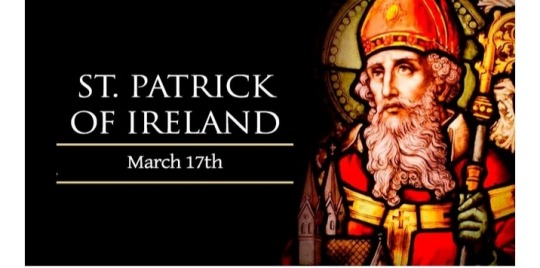
On March 17, Catholics celebrate St. Patrick, the fifth-century bishop and patron of Ireland, whose life of holiness set the example for many of the Church's future saints.
St. Patrick is said to have been born around 389 AD in Britain.
Captured by Irish raiders when he was about 16, St. Patrick was taken as a slave to Ireland where he lived for six years as a shepherd before escaping and returning to his home.
At home, he studied the Christian faith at monastic settlements in Italy and in what is now modern-day France.
He was ordained a deacon around the year 418 AD by the Bishop of Auxerre, France. He was ordained a bishop in 432 AD.
It was around this time that he was assigned to minister to the small, Christian communities in Ireland, who lacked a central authority and were isolated from one another.
When St. Patrick returned to Ireland, he was able to use his knowledge of Irish culture that he gained during his years of captivity.
Using the traditions and symbols of the Celtic people, he explained Christianity in a way that made sense to the Irish and was thus very successful in converting the natives.
The shamrock, which St. Patrick used to explain the Holy Trinity, is a symbol that has become synonymous with Irish Catholic culture.
Although St. Patrick's Day is widely known and celebrated every March the world over, various folklore and legend that surround the saint can make it difficult to determine fact from fiction.
Legends falsely cite him as the man who drove away snakes during his ministry despite the climate and location of Ireland, which have never allowed snakes to inhabit the area.
St. Patrick is most revered not for what he drove away from Ireland, but for what he brought and the foundation he built for the generations of Christians who followed him.
Although not the first missionary to the country, he is widely regarded as the most successful.
The life of sacrifice, prayer and fasting has laid the foundation for the many saints that the small island was home to following his missionary work.
To this day, he continues to be revered as one of the most beloved Saints of Ireland.
In March of 2011, the Irish bishops' conference marked their patron's feast by remembering him as “pioneer in an inhospitable climate.”
As the Church in Ireland faces her own recent difficulties following clerical sex abuse scandals, comfort can be found in the plight of St. Patrick, the bishops said.
They quoted The Confession of St. Patrick, which reads:
“May it never befall me to be separated by my God from his people whom he has won in this most remote land.
I pray God that he gives me perseverance, and that he will deign that I should be a faithful witness for his sake right up to the time of my passing.”
9 notes
·
View notes